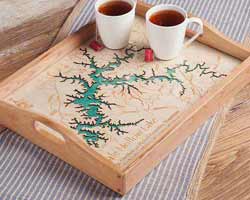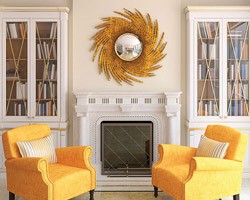Fabulous design. Cutting edge looks. Interesting twists in color, fabric, and texture. These are all elements inherent in design that's ecologically sound. Yes, your creativity can have free reign even as you make choices that help protect the planet. Increasingly, manufacturers are creating products that have minimal impact on the environment, whether because they're made from organically-grown cotton or because they're made with renewable resources. We think environmentally friendly design is so important that we recently added a Green Design lesson to the NYIAD Complete Course in Interior Design.
In our "Decorating Green" column we'll look at a sustainable, low-impact element of design in each issue of "Designer Monthly." We hope these articles will help us all help the planet and the many creatures that share it with us.
International Green Design
When we started doing the research for this article on international trends in Green design, we kept coming across one website: inhabitat.com, one of our favorite design websites. Inhabitat doesn't bill itself as a strictly Green design site, but rather as a "weblog devoted to the future of design, tracking the innovations in technology, practices and materials that are pushing architecture and home design toward a smarter and more sustainable future."
We weren't surprised that we kept stumbling upon Inhabitat in our search, as we often turn to them when we're looking for new ideas in Green design. Founded by Jill Fehrenbacher, a freelance designer, Green design consultant, and architecture student, Inhabitat now has fourteen editors in New York and Los Angeles, and a full staff of design writers.
So it's no wonder Inhabitat covers Green design that is all over the world.
What we discovered in browsing Inhabitat's international stories is that nearly every part of the world is home to exciting developments in Green design.
First stop, Korea. A new center for art and culture in SeongDong-gu held a contest this year for designs, with the Seoul-based UnSangDong Architects winning with "Culture Forest," a building which is made with sustainable materials, and is powered by the sun.
The building features green spaces inside, which are exposed to the outdoors, creating open circulation around the building's interior. It's like a city's green zone, but inside the building, creating a building that is "Green" in more ways than one.
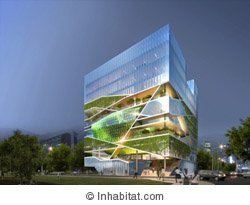
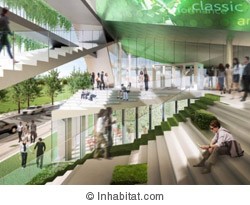
Leaving Asia for South America, this past summer one of the first eco-communities, made up of 58 houses, started up in Brazil, powered with wind and solar energy. And it's not only powered Green, but the community also subscribes to the concept of "zero waste"—everything is recycled, composted, or otherwise used.
As with the Korean arts center, the "Green" of greenery is important here too, with 15 square meters of green area per inhabitant, and a garden filled with edible plants.
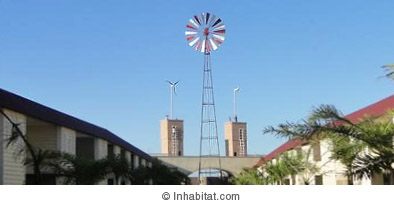
Gardening was on the minds of some clients of Harrison & White, an Australian design firm, who wanted to build a modern home in such a way that the backyard would have maximum sun exposure year-round, so that they could grow their own vegetables no matter the season. In Northcote, a section of Melbourne, Australia, the home was designed using a technique called "reverse shadow casting" to design the exterior and included using sustainable materials.
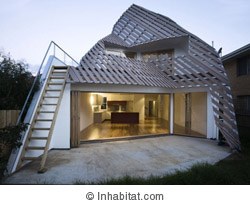
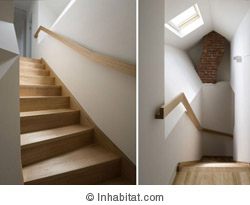
We know that Green design is good for the planet, and that it's good for individuals. Green design is about using sustainable materials, cutting down on transportation of materials, and using products that don't harm the people making or using them.
We don't often think of Green design as also helping save lives in a more immediate way, but in Kenya, that's exactly what Nomadic Communities Trust has been doing for the past ten years—by using camels equipped with solar-powered refrigerators to transport medicines and vaccines to people in need.
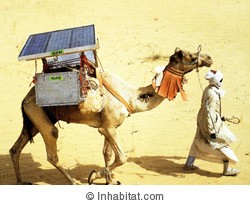
Kenya's Laikipia and Samburu districts are isolated and difficult to get to in a car, particularly as there are so few roads. This mode of transport meant that bringing medicines that need to be refrigerated was impossible. But the camel can navigate the landscape, and with a mini-fridge in a bamboo saddle, covered with crystalline solar panels, can bring medicines wherever they're needed, without compromising their effectiveness.
The fridges were designed by the Designmatters team of California's Art Center College of Design and Princeton's Institute for the Science and Technology of Materials, with a budget of only a few thousand dollars.
In Europe, there isn't such a desperate need for transporting refrigerated medicines, but there is a need for finding new ways of generating power. The town of Tocco, Italy, a tiny, remote, and ancient village, is now powered entirely by wind turbines. In fact, the turbines create 30% more energy than the town needs.
Residents of the forward-thinking ancient village have also installed solar panels on their roofs, and the office of the local cemetery is also now solar powered.
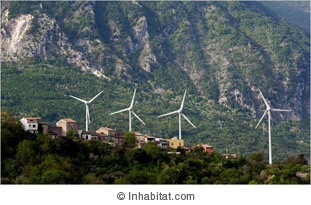
Finally, Bulgaria may not be the first place you think of when you're thinking of Green design, but this home in Zvezditsa, Bulgaria, puts many designs of more design-forward countries to shame.
Built on a reclaimed illegal waste dump, the home's tremendous windows maximize light, but that's just the beginning. The house extracts energy from the earth, collects rainwater, and uses solar power. Ignatov Studios' architects, overseen by Boris Ignatov, with studios in New York and Sofia, Bulgaria, created a structure that resembles a branching tree, so that the look of the home symbolizes its Green purpose.
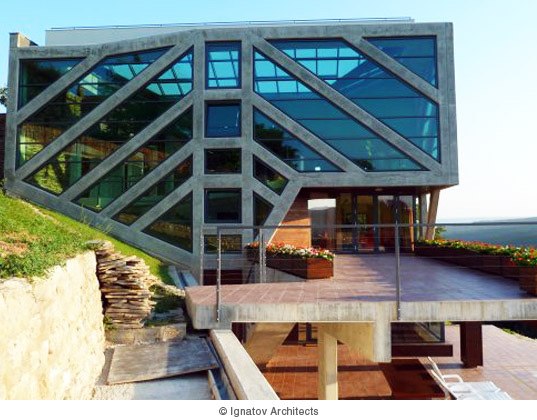
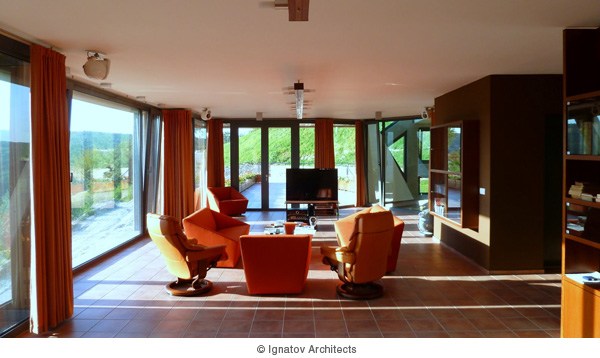
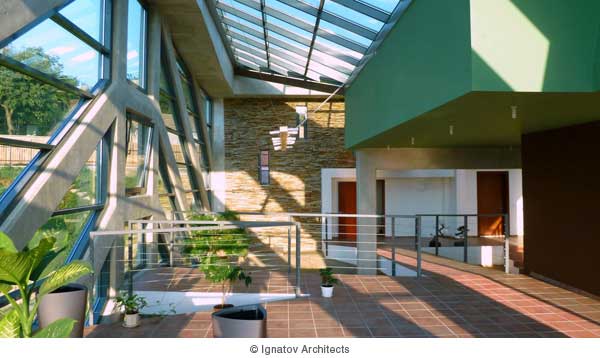
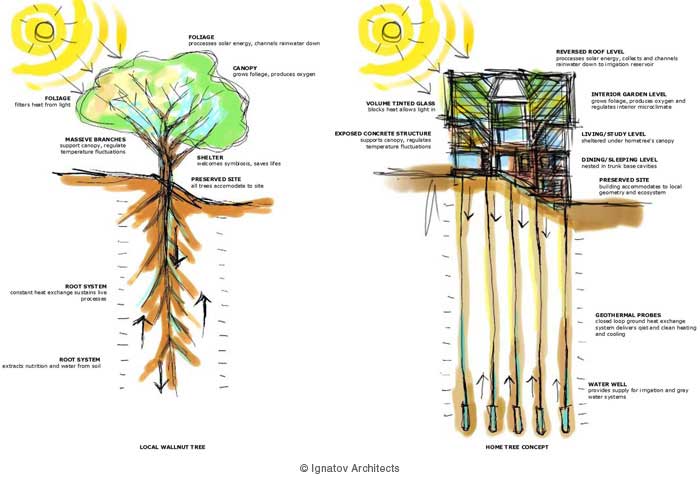
We salute all the designers around the world who are working hard to protect the planet while creating provocative, sustainable design that protects the earth while feeding the soul. And we offer thanks to Inhabitat, for keeping us all aware of Green development around the world.
Resources:
- UnSangDong Architects
- Harrison & White
- Nomadic Communities Trust
- Inhabitat
- Ignatov Architects


